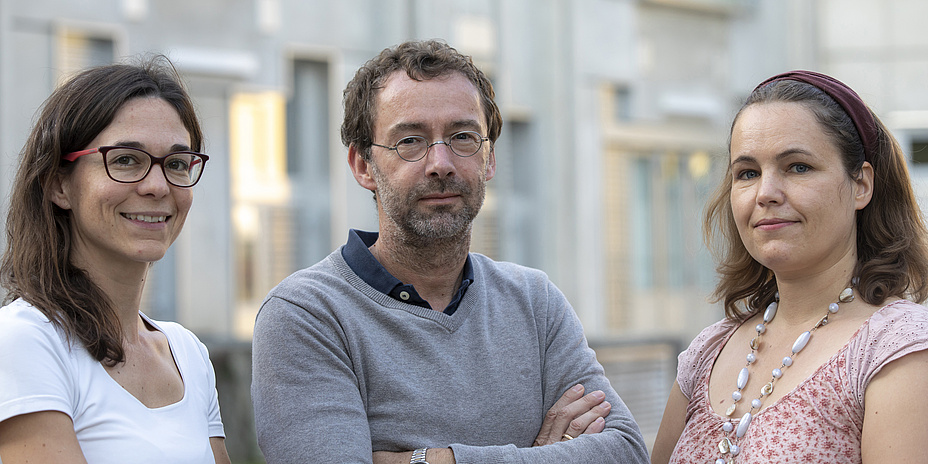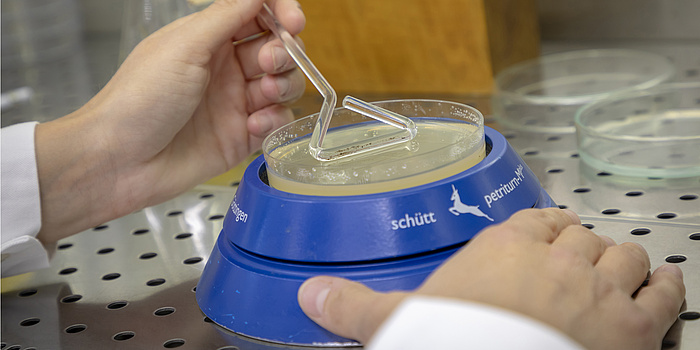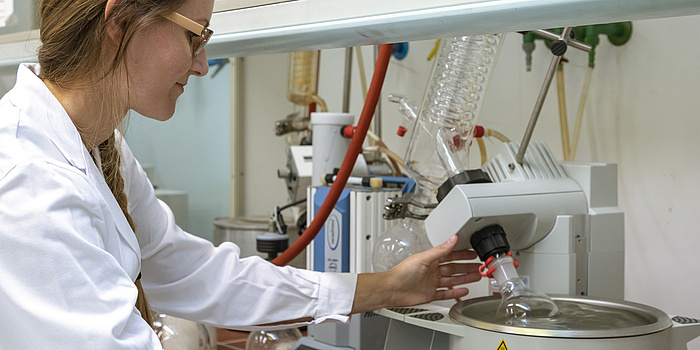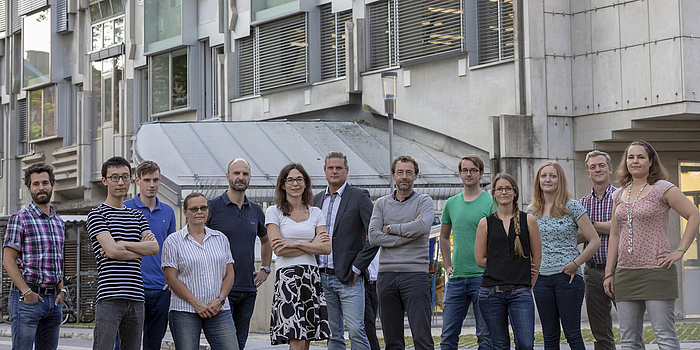Young Skin Thanks to Sugar

Up to 300,000 tonnes of sugar per year is estimated to be piling up in Europe. The fact that not only sweet things can be made from sucrose is an opportunity for sugar growers. Using biochemical methods a wide range of components for cosmetics, cleaning agents and bioplastics can be made from the sugar constituents glucose and fructose.
“The CARBAFIN project is about scaling available biotechnological knowledge and methods to an industrial level and to find out whether the processes are economically viable,” says Christiane Luley. The biochemist is an expert in enzyme technology and the project manager of CARBAFIN. The EU project is being led by TU Graz Professor Bernd Nidetzky, the scientific head of the K2-competence centre “acib” in Graz. Also on board are research institutions and companies from Germany, Switzerland, Belgium and the Netherlands. Part of the team are also several research groups at TU Graz whose project activities are coordinated by Barbara Petschacher from the Institute of Biotechnology and Biochemical Engineering.

Experiments are being carried out in the laboratory of the Institute of Biotechnology and Biochemical Engineering.
Glycosylation as basis
The CARBAFIN project team will develop a platform technology by the end of 2021 through which glucose and fructose can be innovatively exploited on an industrial scale. The basis for this is the biocatalytic process of glycosylation. With the help of enzymes which are being improved by Ghent University, glucose can be combined with other molecules. The resulting glucosides have a wide range of uses. Depending on the relevant involved substances, these include functional additives in cosmetics or as fibre or bran in foodstuffs and animal feed, and in the longterm as surfaceactive substances in detergents. The German CARBAFIN partner bitop, based in Dortmund, has already recognised the potential of glycosylation with respect to cosmetics. bitop is producing a natural glycosidic substance on a glycerine basis which is capable of slowing down cell ageing in the skin (Glycoin natural®).
Fructose, which accumulates as a side product in glucosylation based on sucrose, is an alternative sweetener in food. Fructose, however, is garnering increasing interest for industrial, non-food-related areas. Because from this second component of sugar, hydroxymethylfurfural can be obtained, which can be used in resins, paints, glues, biofuels and biopolymer products – in other words bioplastics. And here, a Swiss company called AVA Biochem – a world market leader in HMF production – is on board.
High degree of technological maturity
“CARBAFIN has a high technology readiness level and in the course of the project an application demonstration will be done by the companies involved. From the academic point of view, we are entering the field with a high level of previous knowledge of biocatalysis, and we will be concentrating more on the commercially viable implementation of reaction and processes engineering,” says Barbara Petschacher. Alexander Passer’s working group at TU Graz’s Institute of Technology and Testing of Construction Materials will play an important role because it will evaluate the technical strategies of glycosylation. “Following a new approach, we integrate the lifecycle and cost analysis into the development at an early stage,” says Petschacher. “This optimises the future process both ecologically and economically.” Another important aspect of developing the process is compliance with EU guidelines, in particular for food products; this will be monitored by our project partner GALAB.

The aim of the CARBAFIN project is to develop a platform technology through which glucose and fructose can be innovatively valorised on an industrial scale.
The CARBAFIN description of actions comprises 21 milestones, which are assigned to a number of work packages. Initial measures after the project launch in January 2018 were set by the European Commission. As in all projects which are funded in the framework of Horizon 2020, it was necessary to create a platform with open access to the research results. Next, there will be a plan for dissemination and exploitation of project results. “We want to set up a glycosylation platform,” says Christiane Luley. “What we develop in terms of techniques in the context of CARBAFIN, will be available later for many different applications. We will be supported by PNO Consultants in the exploitation of the technology.”
Intensive cooperation
“Through the international cooperation of the research partners and companies, the project obtains a European dimension,” says Barbara Petschacher. “And of course, whether you have in mind a process on the scale of tons or on the scale of milligrams, involves quite a different approach. To ensure the development goes in the right direction, it is important to cultivate a good exchange of information.”
Twice a year the almost 30 persons who are involved in the project meet up at one of the partner locations. The first project meeting took place in Graz in June 2018. A meeting near Cologne at the site of project partner Pfeifer & Langen – Germany’s third biggest sugar producer – is set for November 2018. A large expert audience will be informed about the results of the first interim report of the project at the European Summit of Industrial Biotechnology in Graz in November 2019.

The CARBAFIN project team in Graz. The international cooperation partners meet up regularly.
This project is anchored in the Field of Expertise ‘Human & Biotechnology’, one of five research foci of Graz University of Technology.
You can find more research news from this field in Planet research.
Kontakt
Barbara PETSCHACHER
Dipl.-Ing. Dr.techn.
Institute of Biotechnology and Biochemical Engineering
Petersgasse 10-12/I
8010 Graz
Phone: +43 316 873 8412
barbara.petschacher@tugraz.at

![[Translate to Englisch:]](https://www.tugraz.at/fileadmin/_processed_/9/8/csm_banner-thek-by-privat_a42f57f7b3.jpg)


